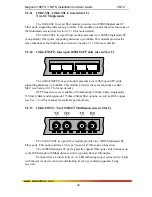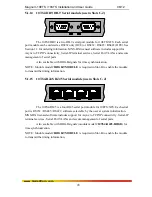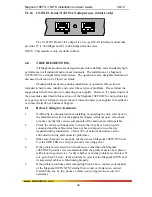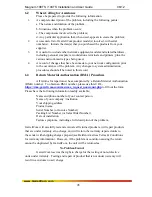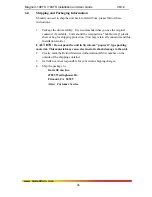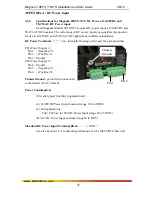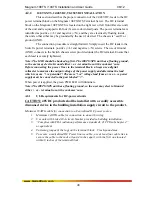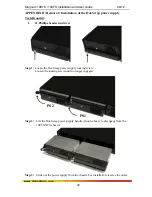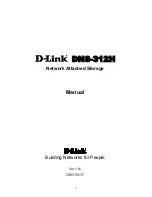
Magnum 10ETS / 10XTS Installation and User Guide
06/12
35
www GarrettCom com
.
.
present in order for CRC to be calculated), the result of indiscriminate cut-through
forwarding is greater traffic congestion, especially at peak activity. Since collisions and
bad packets are more likely when traffic is heavy, the result of store-and-forward
operation is that more bandwidth is available for good packets when the traffic load is
greatest.
When the Magnum 10ETS/XTS Terminal Server detects that its free buffer
queue space is low, the Switch sends industry standard (full-duplex only) PAUSE
packets out to the devices sending it packets to cause “flow control”. This tells the
sending devices to temporarily stop sending traffic, which allows the traffic to catch-up
without dropping packets. Then, normal packet buffering and processing resumes. This
flow-control sequence occurs in a small fraction of a second and is transparent to an
observer.
4.5
Flow-control, IEEE 802.3x standard
The Magnum 10ETS/XTS incorporates a flow-control mechanism for Full-
Duplex mode. The purpose of flow-control is to reduce the risk of data loss if a long
burst of activity causes the switch to save frames until its buffer memory is full. This is
most likely to occur when data is moving from a 100Mb port to a 10 Mb port and the
10Mb port is unable to keep up. It can also occur when multiple 100Mb ports are
attempting to transmit to one 100Mb port, and in other protracted heavy traffic situations.
The Magnum 10ETS/XTS implements the 802.3x flow control (non-blocking)
on Full-Duplex ports, which provides for a “PAUSE” packet to be transmitted to the
sender when the packet buffer is nearly filled and there is danger of lost packets. The
transmitting device is commanded to stop transmitting into the 10ETS/XTS Switch port
for sufficient time to let the Switch reduce the buffer space used. When the available
free-buffer queue increases, the Switch will send a “RESUME" packet to tell the
transmitter to start sending the packets. Of course, the transmitting device must also
support the 802.3x flow control standard in order to communicate properly during
normal operation.
Note:
When in Half-Duplex mode, the 10ETS/XTS implements a back-pressure
algorithm on 10/100 Mb ports for flow control. That is, the switch prevents frames from
entering the device by forcing a collision indication on the half-duplex ports that are
receiving. This temporary “collision” delay allows the available buffer space to improve
as the switch catches up with the traffic flow.






















